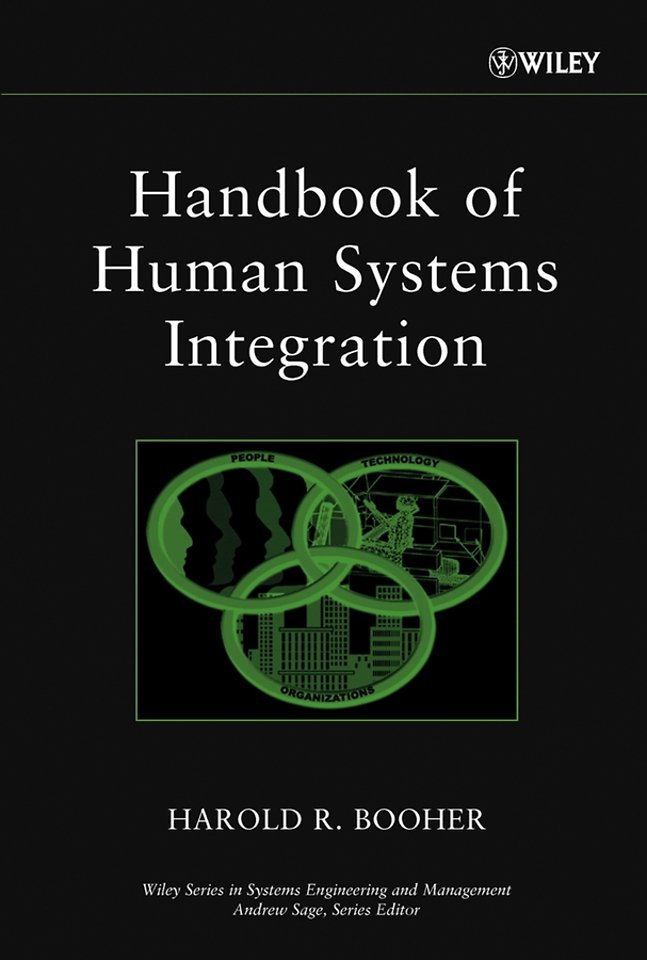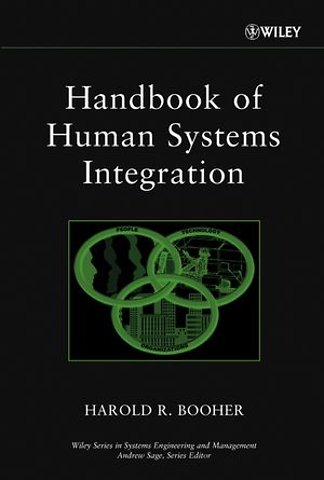Handbook of Human Systems Integration
Samenvatting
A groundbreaking look at how technology with a human touch is revolutionizing government and industry Human Systems Integration (HSI) is very attractive as a new integrating discipline designed to help move business and engineering cultures toward a more people–technology orientation.
Over the past decade, the United States and foreign governments have developed a wide range of tools, techniques, and technologies aimed at integrating human factors into engineering systems in order to achieve important cost and performance benefits that otherwise would not have been accomplished. In order for this new discipline to be effective, however, a cultural change is needed that must start with organizational leadership.
Handbook of Human Systems Integration outlines the principles and methods that can be used to help integrate people, technology, and organizations with a common objective toward designing, developing, and operating systems effectively and efficiently. Handbook of Human Systems Integration is broad in scope, covering both public and commercial processes as they interface with systems engineering processes.
Emphasizing the importance of management and organization concepts as well as the technical uniqueness of HSI, Handbook of Human Systems Integration features:
∗ More than ninety contributors, technical advisors, and reviewers from government, industry, and academia
∗ Comprehensive coverage of the most recent HSI developments, particularly in presenting the cutting–edge tools, techniques, and methodologies utilized by each of the HSI domains
∗ Chapters representing the governments and industries of the United Kingdom and Canada
∗ Contributions from three services of the Department of Defense along with the Federal Aviation Administration and the National Academy of Sciences
∗ Many chapters covering both military and nonmilitary applications
∗ Concepts widely used by government contractors both in the United States and abroad
This book will be of special interest to HSI practitioners, systems engineers, and managers, as well as government and industry decision–makers who must weigh the recommendations of all multidisciplines contributing to systems performance, safety, and costs in order to make sound systems acquisition decisions.
Specificaties
Inhoudsopgave
Preface.
Contributors.
Technical Advisors and Reviewers.
Chapter 1. Introduction: Human Systems Integration (Harold R. Booher).
PART I. ORGANIZATION, MANAGEMENT, CULTURE.
Chapter 2. Leadership That Achieves Human Systems Integration (Charles S. Harris, et al.).
Chapter 3. Human Systems Integration Roles in a Systems Acquisition Culture (Glen Hewitt and Dino Piccione).
Chapter 4. Human Systems Integration and Systems Acquisition Interfaces (Edwin R. Smootz).
Chapter 5. Human Systems Integration Education and Training (Brian M. Kleiner and Harold R. Booher).
PART II. SYSTMS ACQUISITION AND MANAGEMENT PROCESSES.
Chapter 6. Human Integration Requirements in Systems Acquisition: United Kingdom Approach (John A. Harrison and Melanie Forster).
Chapter 7. Human Systems Integration and Acquisition: Contractor′s Perspective (Bruce E. Hamilton).
Chapter 8. Human–System Measurements and Tradeoffs in System Design (Michael Barnes and David Beevis).
Chapter 9. Simulation Based Acquisition (Stephen R. Olson and Andrew P. Sage).
Chapter 10. User Centered Systems Engineering Framework (Lee Scott Ehrhart and Andrew P. Sage).
PART III. METHODS, TOOLS, AND TECHNOLOGIES.
Chapter 11. Manpower, Personnel and Training Integration Methods and tools (Susan Archer, et al.).
Chapter 12. Integrating Training into the Design and Operation of Complex Systems (Lawrence J. Hettinger).
Chapter 13. Human Factors Engineering Methods and Tools (John Lockett and Jeffrey Powers).
Chapter 14. System Safety Principles and Methods (Donald W. Swallom, et al.).
Chapter 15. Environmental Health Hazard Analysis and Assessment (Welford C. Roberts).
Chapter 16. Personnel Survivability Methodology (Richard N. Zigler and Ronald A. Weiss).
Chapter 17. Cost and Benefit Analysis for Human Systems Integration (William B. Rouse and Kenneth R. Boff).
PART IV. APPLICATIONS.
Chapter 18. Human Systems Integration in Army Systems Acquisition (Harold R. Booher and James Minninger).
Chapter 19. Human Characteristics and Measures in System Design (Nita Lewis Miller, et al.).
Chapter 20. Human–Centered Shipboard Systems and Operations (Glenn A. Osga).
Chapter 21. Linking Human Performance Principles to the Design of Information Systems (Linda G. Pierce and Eduardo Salas).
Chapter 22. Human Systems Integration and Training for New Systems (John Klesch and William Stembler).
Chapter 23. Air Traffic Control and Human Factor Integration (Anne Mavor and Christopher Wickens).
Chapter 24. Human Systems Integration & New Product Development (William B. Rouse).
Afterword.
Appendix.
Index.
Vaak samen gekocht
Anderen die dit boek kochten, kochten ook
Net verschenen
Rubrieken
- aanbestedingsrecht
- aansprakelijkheids- en verzekeringsrecht
- accountancy
- algemeen juridisch
- arbeidsrecht
- bank- en effectenrecht
- bestuursrecht
- bouwrecht
- burgerlijk recht en procesrecht
- europees-internationaal recht
- fiscaal recht
- gezondheidsrecht
- insolventierecht
- intellectuele eigendom en ict-recht
- management
- mens en maatschappij
- milieu- en omgevingsrecht
- notarieel recht
- ondernemingsrecht
- pensioenrecht
- personen- en familierecht
- sociale zekerheidsrecht
- staatsrecht
- strafrecht en criminologie
- vastgoed- en huurrecht
- vreemdelingenrecht









